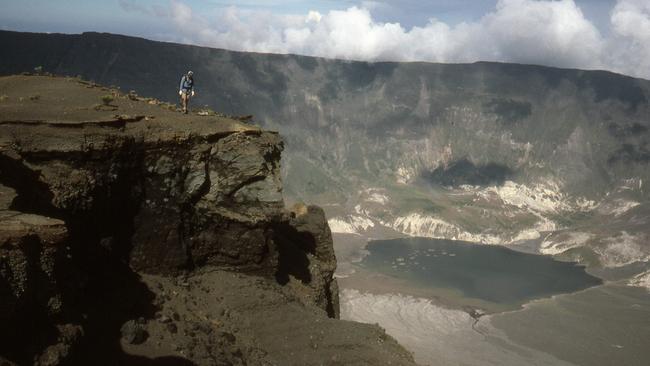One in six chance of a massive volcanic eruption this century
British researchers say the world is ‘woefully unprepared for such an event’, which could have repercussions for supply chains, climate and food resources worldwide.

In 1815, the Tambora volcano in Indonesia erupted and 100,000 people died. That was not where the effects ended. The soot thrown into the stratosphere meant that across the world temperatures dropped by a degree.
Crops failed, the summer failed, and in the gothic gloom of the frozen Alps, Mary Shelley sat inside and wrote Frankenstein.
According to scientists, there is a one in six chance that an eruption of a similar magnitude could happen again this century – and we are not ready for it.
Writing in the journal Nature, British researchers say the world is “woefully unprepared for such an event”, which could have “repercussions for supply chains, climate and food resources worldwide”. Michael Cassidy, an associate professor of volcanology at the University of Birmingham, and Lara Mani, from Cambridge University’s Centre for the Study of Existential Risk, contrast efforts made to tackle threats from space with those from Earth.

“Over the next century, large-scale volcanic eruptions are hundreds of times more likely to occur than are asteroid and comet impacts put together,” they write. “The climatic impact of these events is comparable, yet the response couldn’t be any more different.”
While NASA has allocated more than £200 million ($347m) to projects to deflect asteroids, there is no investment to prevent or mitigate large-magnitude eruptions.
The scientists say better forecasting could lessen the effects of such an event. “Advice could be delivered by SMS, instructing someone to ‘clear off your roof to prevent collapse, as 50 centimetres of ash is expected over the next two hours’, for example,” they write.

Globally, they argue, countries could agree to methods for transporting food and fertiliser in the event of a sudden cooling – which could be devastating even in a warming world. “Although the cooling effects of sulfate aerosols in the stratosphere might counteract warming from greenhouse gases, the impact of a large volcanic eruption would be abrupt and immense, with uneven effects on weather, rainfall and temperature.”
They suggest we might discover eruptions are not inevitable – perhaps by drilling into the magma to release pressure. “Directly affecting volcanic behaviour might seem inconceivable but so did the deflection of asteroids.”
The Times






To join the conversation, please log in. Don't have an account? Register
Join the conversation, you are commenting as Logout